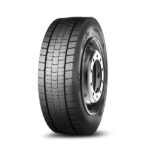Emily Newton is the Editor-in-Chief of Revolutionized, an online magazine exploring innovations in the industrial sector.
When assembling a full pouring or mixing fleet for concrete work, eventually it will come to the question of whether to upgrade the total capacity by adding another full-size truck, or by adding attachments, such as a portable weigh batch mixer. Choosing one over the other comes with its own set of pros and cons. Of course, it’s always good to have both in a fleet inventory, but the real challenge is choosing when it’s the right time to have one over the other.
Then there’s the question of whether to purchase the equipment outright or lease it from a major provider. With recent events, it makes sense to try and cut down on operating costs and expenses.
When is it appropriate to select attachments for concrete pouring over a full-size, ready-mix truck? What are the considerations a fleet owner should think about before making the decision?
Before we dive in, it’s important to state that this guide explicitly deals with concrete mixing, pouring, and handling equipment, whether full-size trucks or attachments. At no time is it meant to reference additional machinery and tools, such as excavators, planers, or hydraulic hammers, which may be used to reseat, break, or rework existing concrete.
1. Maintenance Responsibilities
A truck, especially a ready-mix concrete hauler, is going to require considerably more maintenance than most attachments. In most cases, attachments don’t have additional hardware to consider, such as an engine. That’s not to say attachments don’t require maintenance, but the responsibilities are far less stringent and it’s much easier to manage.
The same is true when it comes to cleaning and servicing the pouring systems. It’s much more difficult to clean out the drum of a ready-mix truck. Weigh batch mixers and smaller equipment tend to be a lot more accessible for cleaning.
However, this is one area where leasing equipment can offer major benefits. Fleet owners can lease trucks, instead of owning, which leaves the maintenance duties to the owner of the vehicles. Depending on the contract agreement, this may also mitigate the costs of additional maintenance for the fleet, which includes replacing tires, failed or malfunctioning parts, and much more.
2. Sublet and Extra Income Opportunities
A business can absolutely rent out ready-mix vehicles, but unless it supplies the driver and the additional support crews, the customer base is going to be severely limited. Anyone renting those trucks needs to know how to drive them, with the appropriate licensing. But they also have to know how to operate the rest of the systems, including the concrete pouring tools.
Attachments, on the other hand, have far less to manage and worry about, so renting them out is not only simpler but also more accessible to a wider range of customers. In addition, businesses can either rent out trucks or trailers to haul those attachments, or they can charge extra to deliver them to on-site projects. It presents another revenue opportunity, on top of subletting the equipment.
Of course, none of these scenarios apply to fleet owners who are themselves leasing inventory.
3. Mixture Limitations
Except in rare circumstances, ready-mix trucks always have the mixture for concrete work inside the drum. And as the name implies, it’s pre-mixed and ready for use. That’s excellent when a project is moving fast and the work is going to be done almost immediately. However, pre-mixed concrete cannot be kept for extended periods.
More importantly, there are limitations to how and where it can be stored. Temperature, humidity, and length of time can all determine how viable a concrete mixture is. If it’s too old, it’s not suitable for use. What’s more, the trucks need to follow the proper procedures to keep the mixture fresh, which includes a spinning drum, and that uses fuel.
Compared to most attachments, the concrete is generally mixed on-site using the related hardware. That means easy-mix bags or similar sources are located on-site, and the mixing will be done right then and there, or throughout the scope of the project. The concrete mix, then, doesn’t have to be babied as much, but it does have to be used shortly after being mixed — unlike the trucks, attachments are not meant to store concrete mixtures for very long, especially since most are exposed to the elements.
Depending on the length of the project, there are many other elements to consider, too. Concrete expansion, the natural expansion of poured concrete because of environmental factors, can lead to stress cracks. Planning out where these cracks will appear, or if they appear at all, is a huge part of concrete work. That takes time, and may or may not influence the state of the concrete mixture. Quick pours are not possible in this case, which may warrant attachments and the use of on-site materials, instead of ready-mix trucks.
Fleet owners must decide what scenario is best for their next upgrade. Do they need a truck that can hold more mixture, for larger projects, at longer intervals? Or, do they need an attachment that allows project teams to mix the concrete on-site and on-demand, albeit with a few more limitations?
4. Choosing the Right Vehicle
Attachments are generally meant for one, maybe two, select purposes, and they’re distinct. In other words, everyone knows what they’re for, what they’re going to be used for, and when to apply them.
Trucks, on the other hand, can apply to a wide variety of jobs or projects, and there is a huge selection of categories. Some ready-mix concrete trucks are heavy-duty and intended for commercial-grade projects, while others are smaller, and for DIY or limited concrete work. For fleet owners, this can provide an additional challenge, which is balancing the right vehicles for the job, which also means having the appropriate vehicles on hand.
Using smaller vehicles for commercial-grade projects can create complications. For example, it’s possible there won’t be enough of a concrete supply even with multiple trucks. They may not be able to pour the concrete fast enough, nor will they have the right onboard equipment and tools to make the work easier. It makes fleet management more challenging overall, as not only do business owners have to consider what they have available in inventory, but also what they may need for future concrete work.
5. Pump vs. Dump
Trucks are designed for large-scale projects, with spouts or chutes for pouring the mixture into place. For more direct placement, tools like a skid steer pump are necessary, because the spout is smaller and offers more precision. The latter is a type of attachment that may offer more direct pours, but it also slows down a project.
It brings up the question: How will concrete mixtures be laid? It’s more of a consideration for project and development crews. So how does this tie into fleet management? It’s simple. Fleet owners must be prepared to deal with target customers. Clients renting or using attachments are going to differ from those ordering commercial-grade, ready-mix trucks.
It means fleet owners must decide, in a general sense, what customers they want to be supporting. Bigger operations may support both types of customers. But that will, in turn, require more dynamic responsibilities on the part of the fleet owner. Managing a generic fleet that serves all purposes requires more equipment for asset management, better organizational techniques, and smarter scheduling systems.
The bigger the fleet, the more challenging it is to manage. And it gets even more complicated based on what types of customers a business is serving.
Building a Better Concrete Fleet
While the term “fleet” may be misplaced in this case, it does indicate that owners will be managing, organizing, and maintaining a wide variety of vehicles or systems. The question is what those systems will be, and whether they’ll be full-size trucks or attachments for concrete work.
Understanding the differences between concrete trucks or haulers, and smaller attachments, as well as the related requirements, can also be the difference between successful fleet operations, or not. Fleet owners should truly take the time to consider how and where they can build a better concrete fleet. That way, when the customer is ready, the fleet is ready.








